Awesomeness Round-up – 12/13/10
- By Sara Mitchell
- December 13, 2010
- 1 Comment
One of the James Webb Space Telescope’s many feats of engineering will be its actuators – tiny mechanical motors on the back of its primary and secondary mirror segments that will help the telescope focus by changing the mirrors’ curvature. You can’t see the actuator in the photo, because it’s behind the mirror! The Behind the Webb podcast just released an episode about this fascinating technology, called “Got Your Back.” You can watch it after the jump!
There was an exciting exoplanet discovery last week! The newly discovered planet is a gas giant, very hot, and has an unusual amount of carbon. It’s name is WASP-12b, and it’s actually the first carbon-rich world ever observed. The discovery was made using NASA’s Spitzer Space Telescope, along with previously published ground-based observations.
What’s intriguing is that it’s possible that WASP-12b might harbor graphite, diamond, or an even more exotic form of carbon in its interior, beneath its gaseous layers!
The below graphic shows an artist’s conception the planet (right) and its star (left). It also shows a plot of data from NASA’s Spitzer Space Telescope which indicates the presence of molecules in the planet. You can read more at Geeked on Goddard and the JPL press release.
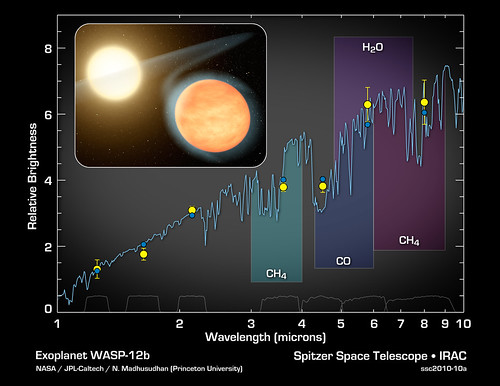
Image credit: NASA/JPL-Caltech/CFHT/MIT/Princeton/UCF
In other exoplanet news, Geeked on Goddard has just released a podcast in conjunction with 365 Days of Astronomy. Entitled “The Birth, Life, and Death of Alien Planets,” it features scientists within the Astrophysics Science Division talking about the science and wonders of exoplanets.
We thought we’d do a quick follow-up to the “arsenic-based life” news we posted about last week. Apparently one scientist is writing a formal Letter to Science which brings up some questions about contamination, suggesting that the original research may not have done a good job of eliminating or estimating the possible magnitude of contamination. If we understand this correctly, this letter claims that even the arsenic-rich nutrients had enough phosphorus to sustain growth of the bacteria in the usual way, and they didn’t use the standard technique for eliminating contamination before testing the chemical composition of the bacteria grown in arsenic-rich nutrients. There’s also a Newsweek article asking questions, too.
We find this fascinating from a “this is how science happens” point of view. Science is all about testing and retesting your theories to try to poke holes in them – or have other people do it! We’re not taking one side or another, but rather watching scientists have healthy debate and waiting to see what comes out next.
Credit: NASA/University of Chicago and Adler Planetarium and Astronomy Museum
This lovely visualization from the Sloan Digital Sky Survey presents a 3-D zoom through some of the Universe’s numerous galaxies and quasars. For the past decade, the SDSS project has utilized a ground-based optical telescope in New Mexico to map the sky and learn more about the Universe around us. You don’t even need special glasses to enjoy the 3-D journey!
The Sun has been busy… and so have the satellites that observe it!
SDO released a new video of the monster filament that’s been snaking around the Sun. It just keeps getting longer! Geeked on Goddard has provided ongoing coverage, including brilliant images and a fantastic comparison of the filament’s size to that of Jupiter and Earth (hint: it’s much, much bigger!).
The SDO folks also shared this image of a giant smiley face watching us from the Sun. Don’t worry, it’s just solar activity, as captured by the satellite’s Atmospheric Imaging Assembly (AIA)!
SOHO joined in the fun with this new video that shows a coronal mass ejection (CME) that occurred back in August. Check out the Flickr page to learn more about what you’re seeing in this video.
And finally, we wouldn’t want to leave out STEREO! This 3-D image (which requires glasses to see it properly) is a combination of all of STEREO’s wavelengths. It came out with a press release about how much of the Sun’s activity comprises “sneak attacks” that aren’t preceded by the usual warning signs that astronomers would use to predict them. In other words – space weather can still catch us by surprise, unless we look for new warning signs to help us predict them even better!
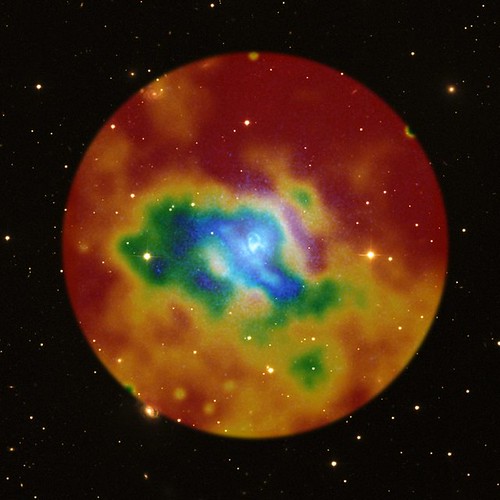
X-ray: NASA/CXC/SAO/S.Randall et al., Optical: SDSS
We’re used to talking about “space weather” as it pertains to the effects of the Sun’s activity on Earth and the rest of the Solar System. But here’s a neat shot from Chandra of an “intergalactic weather map,” showing temperature variations around the elliptical galaxy NGC 5813! If you visit the Chandra website, you can roll your mouse over the image and see the temperature info pop up.
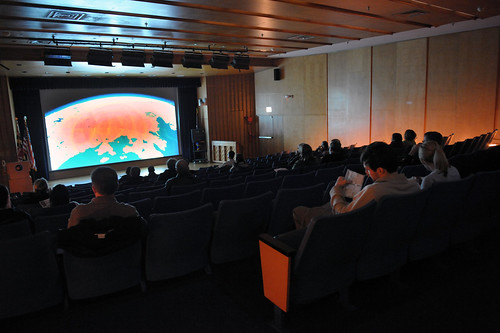
Credit: NASA/GSFC/Debbie Mccallum
Besides our efforts in science and engineering, Goddard also has quite a creative side! Last week, employees were invited to stop by the Center auditorium to view an assortment of short films for the Goddard FilmFest and vote for their favorites. This has become a tradition that we all look forward to each year! Interested in checking out the slate of films and casting your own vote? Here’s how you can watch and vote at home, with online voting ending December 15th. There’s some stiff competition in there!
Earlier this fall, we blogged about a project called “A Week in the Life of Goddard,” which asked employees here to take photos of what was going on for a week – the ordinary and extraordinary alike. Goddard released three galleries last week, featuring Nature, At Work, and People.
Here are a few of our favorites, starting with a self-portrait reflected in a model of JWST:
Here’s a fire drill outside of our new building, where some of the Blueshift team works:
And a dramatic shot inside another building:
Finally, a popular spot for taking photos in our Visitor Center (check out our About page for Sara’s turn in the astronaut suit):





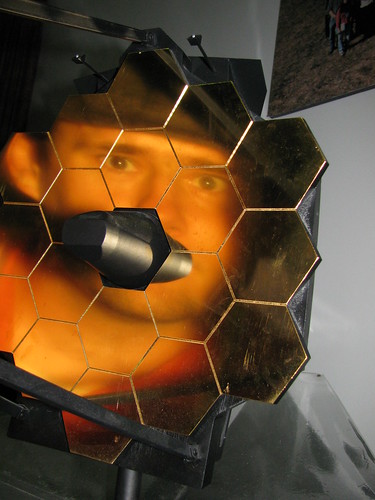
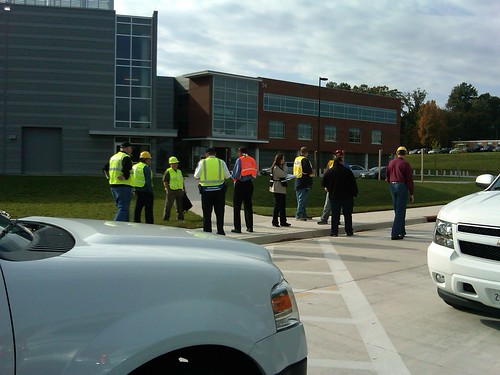

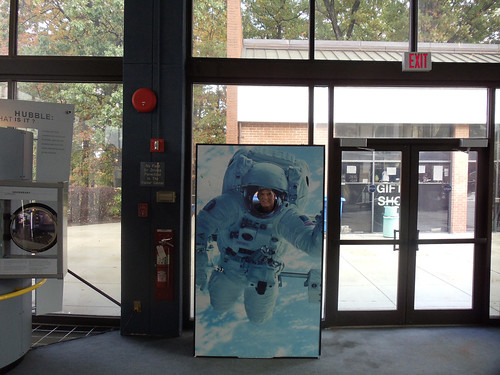

Hey – awesome article and thanks for tagging my photo!
-Drew